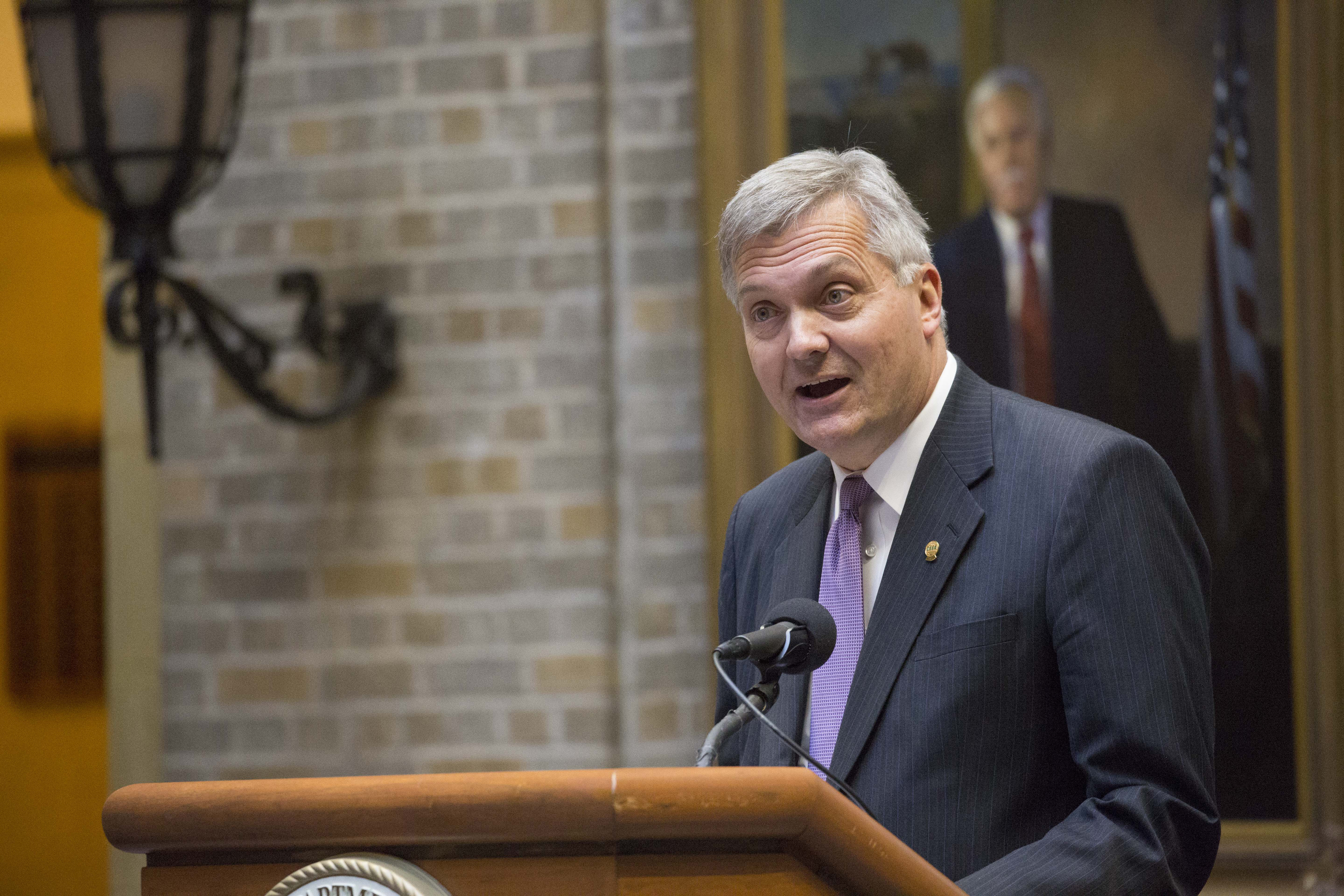
NRECA CEO Jim Matheson is urging policymakers, including Agriculture Secretary Sonny Perdue, and key stakeholders to include electric cooperatives and their members in the quest to address the “uneven landscape” created by a lack of broadband internet access in rural America.
“NRECA is a group health care plan provider, and we cover people in rural places where health care providers gather at the McDonald’s parking lot to upload and download radiology images and diagnoses because they aren’t connected in their offices or where they provide home health care,” Matheson told the audience at the first e-Connectivity Forum in Washington on April 18.
“NRECA sponsors a telemedicine program that can bring a consultation right into a home, but it doesn’t work best unless it’s broadband-enabled,” he said.
“And that’s the situation in far too many communities. Existing programs for expanding high-speed internet access are falling short of meeting the needs of rural America.”
For bridging the digital divide, Matheson highlighted three policy recommendations:
- Priority for higher speeds and providers who put their own capital in play
- Federal grant support with a preference for minimum upload/download speeds of 25Mbps/3Mbps, and higher speeds—even in low-density areas
- Rigorous reviews upfront to ensure that applicants who bring broadband to rural America can deliver the speeds they promise
“The only way for 23 million unserved and underserved Americans to gain equal access to modern education, health care, economic and civic institutions is if they are connected,” he said. Until then, rural Americans “are living and working in an uneven landscape where those with connectivity have these opportunities and those who lack connectivity do not.”
The forum featured Perdue, Federal Communications Commission Chairman Ajit Pai, USDA Rural Utilities Service Administrator Ken Johnson, and Mel Coleman, CEO of North Arkansas Electric Co-op and NRECA Arkansas director.
Coleman said his co-op in Salem, Arkansas, is in the midst of a five-year fiber-to-the-home project driven by the need for telemedicine, educational opportunities, modern farming and growing small business. The 36,000-member co-op has launched a broadband pilot program, delivering service to 650 people so far.
“I can’t go anywhere where someone is not begging me, ‘please put me in your next phase to bring broadband to my house,’” Coleman said. “It’s all about quality of life.”
The high cost of building fiber broadband remains the “biggest obstacle” to serving each member, especially in low-density areas, he said. NAEC estimates that providing high-speed internet to every member will cost $140 million, Coleman said.
Johnson talked of his experience of building broadband as the general manager of Co-Mo Electric before joining USDA April 16. With board support, the Tipton, Missouri, co-op in 2011 began a broadband project to bring 1 gigabit—the fastest speed—to all 32,000 members. He recalled the “sense of urgency coming from our members that really got us … to move forward.”
As head of the RUS, Johnson said he wants programs that lends to co-ops to run “as efficiently, as effectively as we possibly can.”
“We want to be simple and easy to do business with, however, we still need to maintain integrity in the process and make sure we spend tax dollars wisely,” he said.
Perdue told the audience that rather than imposing a federal solution on every community, delivering broadband to rural America will require partnerships among the federal and state governments and the private sector. He noted that a broadband solution will “be dependent on local communities, states, municipalities to help guide us in what direction they want to go.”
Perdue added that, like when the Rural Electrification Act was signed, the federal government does not have enough money to deliver broadband across the country and he hoped that this transformation of America will sustain itself with a subscriber model.
Matheson underscored how electric co-ops already are building fiber-optic broadband to their substations and meters primarily to improve efficiency, manage load and substantially lower bills to members, especially those in rural persistent-poverty households served by co-ops.
“We are highly effective in this space because we understand the game-changing effect of rural access to connectivity in the same way we understood the game-changing effect of rural access to electricity,” said Matheson.
Sponsors of the event included NRECA, USDA, CoBank, National Rural Utilities Cooperative Finance Corporation (CFC), the Rural Broadband Association, and the Farm Foundation.